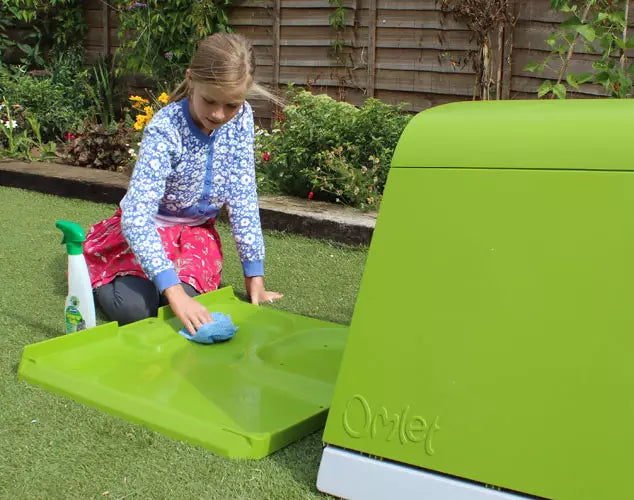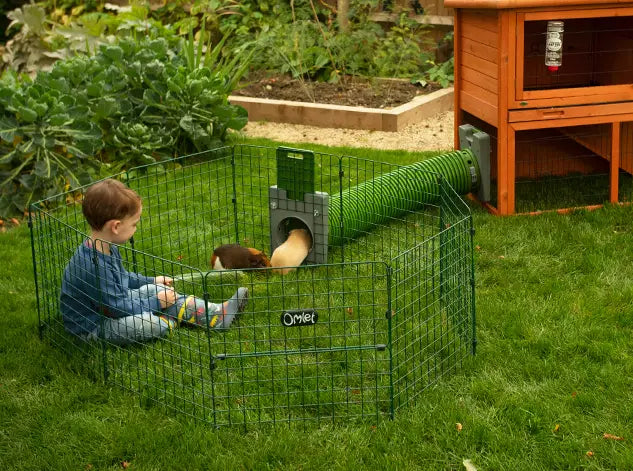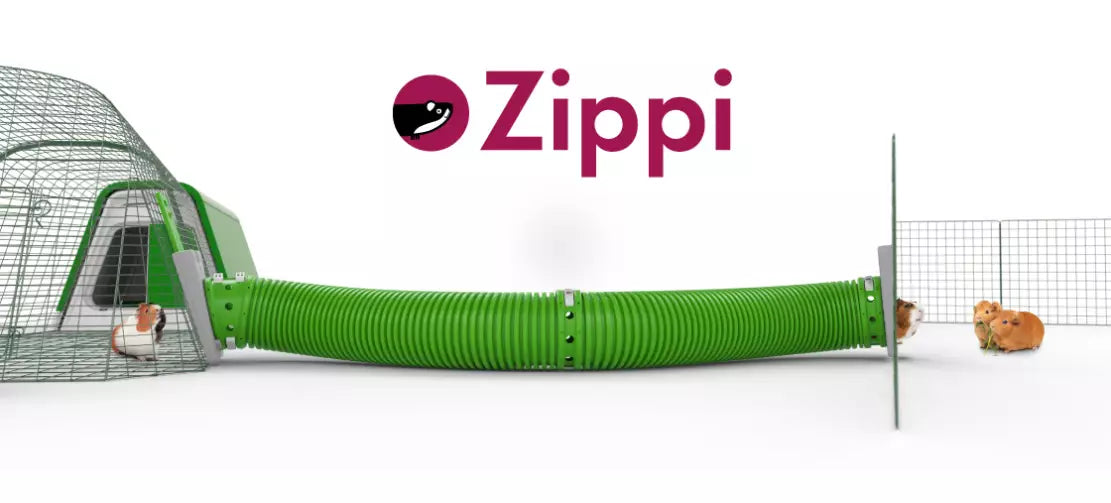5 Guinea Pig Care Tips
Saturday, 9th October 2021
Keeping your pets and their homes clean and hygienic is one of the best ways to prevent illness or distress. It’s obvious when your guinea pig is happy and in good health, as they will be running, playing, chattering and acting as they usually do. However, if your guinea pig seems to be under the weather, but a trip to the vet has identified no underlying problems, this could be a sign that better hygiene is required. Here are 5 guinea pig care tips, so that you can be on your way to helping your cavies!

1. Avoid frequent bath time!
If your guinea pigs’ coats are in need of a good clean, there are some important things to bear in mind. Whilst it might be your first instinct to want to bathe them, this can actually be bad for your guinea pigs’ health. In particular, this can lead to developing dry skin. Guinea pigs actually maintain a good level of cleanliness through self or group-grooming naturally. If a guinea pig coat becomes matted with dirt, you may need to use a chemical-free wipe to slightly wet the fur, enabling you to clean it thoroughly. If a guinea pig’s coat gets wet in the process of cleaning, make sure they have plenty of blankets and warm toys to surround themselves with afterwards. However, it’s still a good idea to invest in a grooming kit, especially if your guinea pig lives alone. Therefore, you can take the place of their fellow guinea pigs in maintaining their lovely coats!



2. Keep on top of dental hygiene
Guinea pig teeth are naturally either yellow or orange, so there is no need to worry about struggling to find the smallest possible toothbrush to get them white! However, if you notice that your guinea pigs’ teeth have grown very long, or they’re having trouble eating, it’s a good idea to check with your vet if any action needs to be taken.
Looking after your guinea pig's teeth
Like rabbits, guinea pigs have teeth that grow all the time, but thankfully they are usually worn down by all the gnawing and chewing they do. If you look at your guinea pigs front teeth (there are 2 at the top and 2 bottom) you may be surprised by how long they are. Each tooth may be 1-1.5cm long, but they should meet evenly, and then they will wear down evenly. However, sometimes a tooth may break, as the result of a fall, or from chewing on the cage wires, and if this happens the other teeth may need to be trimmed to make them all even again. As the guinea pig gets older the back teeth may become overgrown, although this is not very common. Any guinea pig that stops eating should be taken to see a vet straight away.
3. Trim your guinea pig's nails
Similarly, you should keep an eye on your guinea pigs’ toenails. Guinea pig toenails need cutting regularly, to keep up with their care regime. If their nails are white, then it is easier to see the blood vessel, or the quick, running down the centre of their nails. This way, you can trim the tip of the nail and avoid the quick. With darker nails however, it can be more difficult to see this. If in doubt, contact your vet, who will be able to help you out with this procedure.
How to trim guinea pig's nails
Cutting your guinea pig's nails can be a bit of an unpleasant experience, but if you do it quite often then it becomes less of a problem, as less will need to be taken off and you’ll have had a little more practise. The key to properly cutting guinea pig nails is to thoroughly examine your guinea pig’s feet before you begin. If your guinea pig isn’t in contact with stone or earth very much then their nails won’t wear down naturally, and clipping them will be necessary to ensure that the nails don’t begin to grow in strange directions or cause your pets any discomfort. If your guinea pigs are on stone or concrete a lot when they’re in their runs, then they’re likely to need trimming less often. If you're not an adult, you'll need to find one to do this for you. Have a good look at your guinea pig’s foot. This is generally easiest if you have someone hold the guinea pig still in their lap, whilst you very gently hold a foot and examine the nails. With light-coloured guinea pigs, you’ll actually be able to see where the blood vessel in their nail finishes, but with darker guinea pigs their black toenails will make it much harder for you to see the line. If you have a torch, shining a light through the nail may help you to see the line where the blood vessel ends. Hold the toe still, and, making sure that you’re not going to cut the blood vessel or the nail just next to the blood vessel, use a pair of human nail clippers to take a tiny bit at a time off the end of your guinea pig’s nails. We recommend watching a video or asking your vet to make sure you’re not cutting too much off.

4. Replace your guinea pigs equipment
Everything you buy for your guinea pigs has a different lifespan, but it is often a good idea to replace items before they deteriorate completely. A typical pet’s water bottle could last many years without breaking, but replacing it every year or so is a good idea. This is because repeated wear and tear of the plastic bottles can result in the animals ingesting plastic, in small pieces or as micro-plastics in the water itself.
Likewise, if you feel that any piece of equipment is no longer possible to fully clean, even after a thorough attempt, it is a good idea to replace it. Your pet would appreciate having something new to play with.
Although there is no way to ensure your guinea pigs will always stay healthy, paying attention to their hygiene and nutrition will set your pets up for long and healthy lives. Doing plenty of research on your guinea pigs is one of the best things you can do as a pet owner. For example, guinea pigs need lots of vitamin C, and they have been known to lack this essential nutrient in their diets. They will benefit from the occasional use of supplements.




Swipe for more
5. Regularly clean your guinea pigs hutch
You may be wondering how to clean a guinea pig’s cage, but it’s pretty simple - especially if you have an Eglu Go Hutch 2m!
PLASTIC HUTCHES
A healthy guinea pig is a relatively clean animal that relies heavily on the nature and safety of their habitat. The cage, hutch and enclosure are the best places to start when looking at ways to improve your pets’ environment. Depending on the material your enclosure is made of, you will need specific products to clean it. Using the right sort of cleaner will ensure you get the most out of every home and piece of play equipment you buy for your guinea pig.
If your guinea pigs live in a cage or caged hutch, a pet-safe liquid spray disinfectant is perfect for cleaning the cage and any plastic base or guinea pig play equipment. It’s a good idea to soak the cage in water and let it dry before disinfecting, as this will loosen any large pieces of dirt and allow the spray to do its job! If regular disinfecting isn’t doing the trick and the hutch retains unpleasant odours, try using hutch cleaning granules, which have been specifically designed to eliminate smells from your pet’s home. When it comes to how often you should clean a guinea pig cage, the rule of thumb is that it should be done on a twice-weekly basis. This involves taking all of their bedding out of their sleeping area, emptying and cleaning their food bowl, cleaning their feeding area, replacing all the bedding and replenishing the food. The more guinea pigs you have the more often this will need to be done, as more excretions will be produced and more mess made.


WOODEN HUTCHES
If your guinea pigs live in a wooden hutch, you need to disinfect it as you would with a regular cage, and it’s also a good idea to clean it every month or so with hot soapy water and scrub the wooden surfaces.
Try to minimize soaking the wood by squeezing out most of the water from your sponge before cleaning. If the hutch contains any fleece liners, these are usually machine washable, and it’s good practice to give them a clean more regularly than you would the rest of the hutch.
Regardless of which type of hutch you use, always let it dry thoroughly after cleaning before reintroducing the guinea pigs.






Swipe for more

